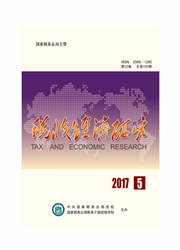

 中文摘要:
中文摘要:
本文借鉴经济周期的周期分析方法,对非税收入的经典周期特征和现代周期特征进行分析,并同GDP和税收收入的周期波动特征进行对比,然后分阶段分别构建税收收入和GDP、政府收入总额中非税收入比例以及非税收入和GDP、政府收入总额中税收收入比例的OLS回归模型。研究结果显示:第一,非税收入的周期波动呈现明显的阶段性特征,改革开放和1994年分税制改革是重要的分界点;第二,改革开放之前,非税收入和GDP呈现出明显的顺周期特征,然而改革开放后非税收入和GDP出现了反周期波动,经济的繁荣伴随的却是非税收入的下降;第三,非税收入和税收收入的相互影响具有非对称性。税收收入的影响居主导地位。税收收入比重的提升会挤出非税收入,然而非税收入的发展却不必然挤出税收收入.甚至还对税收收入的发展具有促进作用。
 英文摘要:
英文摘要:
This paper, based on the economic cycle analysis, analyzed the classic period features and modern cycle charac teristics of the non tax revenue and compared with the characteristics of the cyclical fluctuations in GDP and tax revenue, and then constructed in phases the OLS regression model of tax revenues and GDP, the proportion of the non tax revenue in total government revenue, non tax revenue and GDP, the proportion of tax revenue in total government income. And the conclusions are: First, stage characteristics showed significant in the cyclical fluctuations of non tax revenue, with reform and opening up and the tax system reform in 1994 being important cut off points; Secondly, before the reform and opening up, pro cyclical characteristics showed significant in the non tax revenue and GDP, and after reform and opening up, however, the fluctuations of non tax revenue and GDP are counter cyclical with non tax economic prosperity accompanied by decline in revenue; Thirdly, the interaction between non tax revenue and tax revenue are of non symmetry, tax revenues, the dominant factor, af fecting the proportion of non tax revenue, however, the development of non tax revenue does not inevitably affect tax revenue, and even has a role in promoting its development.
 同期刊论文项目
同期刊论文项目
 同项目期刊论文
同项目期刊论文
 期刊信息
期刊信息
